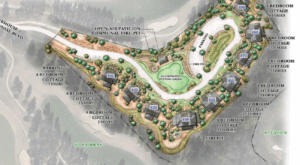
Carlyle Merring
Superintendent Carlyle Merring grew up in small town Pennsylvania where his interest in Agronomy was set in motion during his teenage years. These days, he’s the man responsible for the daily playing conditions at the 1926 Donald Ross design at Sara Bay Country Club in Sarasota, Florida.
Sara Bay has a prominent legacy of having hosted “Golden Age” legends of the game that includes a legendary match between Bobby Jones and Walter Hagen. I met Merring while visiting the club earlier this year, and several months later we reconnected for this Q&A session about his career path and time at Sara Bay. . .

LinksNation – Can you tell us where you grew up, and how you became interested in golf and more specifically the turf industry?
Carlyle Merring – I grew up in northeast Pennsylvania in a small town called Lake Ariel, about half an hour outside of Scranton, Pennsylvania. I found a set of clubs in my basement when I was 14 and played on our high school team. There was a local 9-hole course where I worked during the summers all through school so I would work all day and then play as much golf as I could. While working there I was just fascinated by everything that went into maintaining the course, I loved being outside and just the variety of it all. So, I decided to attend Penn State and obtain a turf degree.
LN – Who were your biggest influencers and mentors as you studied and advanced in the world of Agronomy?
CM – I would say that every person I have worked with throughout my career had a great influence on me, I was fortunate enough to work with tremendously talented and driven individuals who were all excellent leaders with their own management skills regarding people and turf. Tim Huber, Kevin Klemenz, Jeff Cathey, Eric Bauer, Chris Zugel I learned so much from all of them.
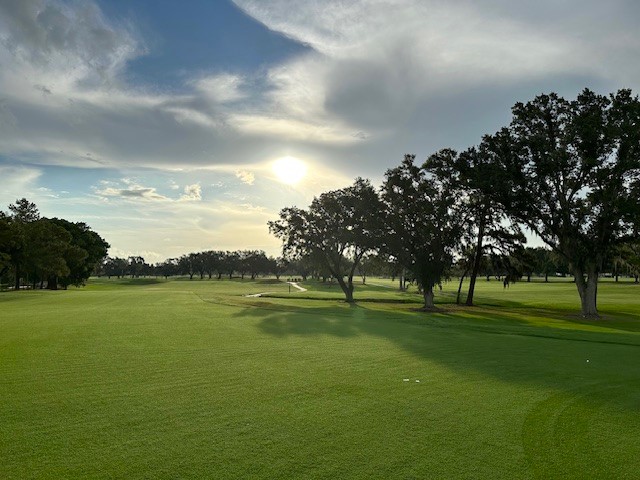
LN – Where has your career taken you before landing here on the west coast of Florida in Sarasota?
CM – It’s taken me to some great places, I spent two summers as an intern at Whistling Straits in Wisconsin and worked there after I graduated college before moving to Denver and working at Cherry Hills Country Club. From Denver I moved to the Houston area and spent four years at The Club at Carlton Woods before moving to Naples and working at Tiburon Golf Club.
LN – Was there a golf event you worked at along the way that inspired you to one day be at a place with the historical significance of a Donald Ross classic like Sara Bay?
CM – Absolutely, I worked the U.S. Amateur at Cherry Hills in 2012. It’s a William Flynn course that has held U.S. Opens, PGA Championships, U.S. Women’s Open and more. I mean there’s a plaque on the first tee commemorating Arnold Palmer driving the first green in the 1960 U.S. Open. The history of that club is incredible and made my time there even more special.
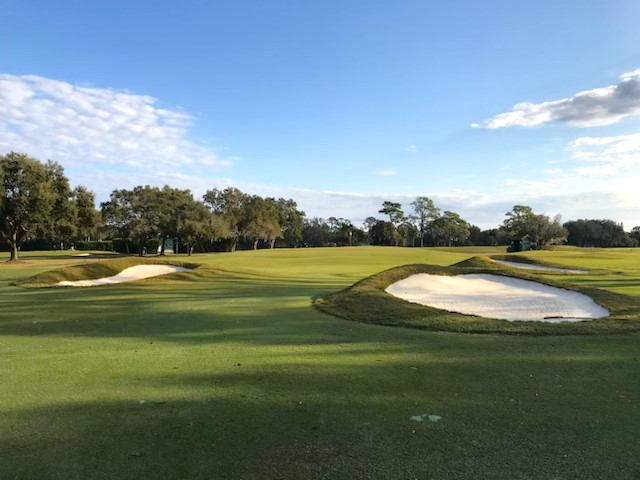
LN – You joined the club in 2018, that was around the time that Kris Spence was here doing the first phase of the restoration. Can you discuss what that was like and what you learned going through the renewal of a golden age Ross classic as opposed to a more modern designed course?
CM – I arrived in 2018 right after the restoration had been completed, and unfortunately, I hadn’t seen the golf course in person prior to the restoration. I have since spent a lot of time with Kris as he’s been back making changes and the biggest thing Kris always talked about was just restoring the features and feel of the course Ross had initially, particularly the greens complexes and bunkers. The old greens were severely crowned or domed so hole location variety suffered, and everything was kind of symmetrical. Selective tree removal has been a big part of the process the last few years due to overplanting in the past, and to improve turf health while opening sightlines.
LN – What is the biggest challenge for you and the Agronomy Team on this property (labor, shortage of time to prepare the course each morning, water issues, nematodes, soil conditions, etc)?
CM – It’s a bit of all the above. Labor is always going to be tough. There’s 15 of us total on staff so it’s a balancing act of focusing your resources on preparing and setting up the golf course each morning, completing all the detailed processes that need to occur on a regular basis, and completing projects.
Water quality for us fluctuates, unfortunately it gets worse during the winter dry season which coincides with the most stressful time of year for bermudagrass. Nematode control to me is convoluted, they will always be present and contribute to turf decline. There are limited control options, multiple species, populations fluctuate and are sporadic, treatments get very expensive as they need to be somewhat frequent and continuous. We do our best to treat them directly as little as possible and focus on reducing other stressors that are more practical to control. Every golf course has a variety of soil conditions that prove difficult to manage and maximize playability while meeting the aesthetic threshold expected by the membership, it’s all about controlling the water.
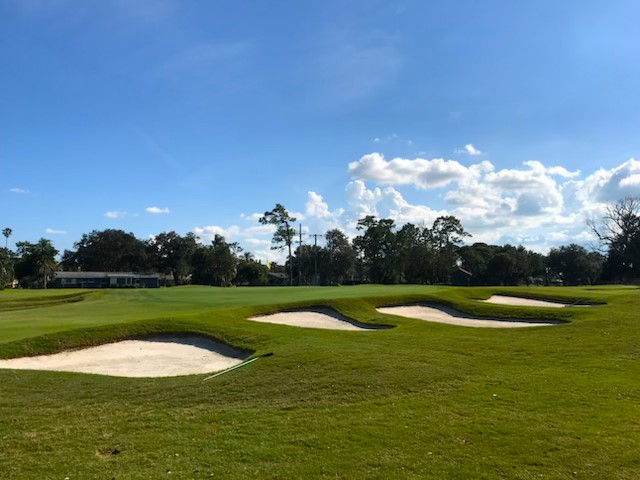
LN – When we visited the club earlier this year, club historian Gary Cole mentioned a re-grassing of the playing surfaces this summer. How did that go, what turf varieties were used, and is the restoration complete or is there another phase in the near future?
CM – The re-grassing project turned out fantastic, it was certainly challenging with a atypical summer where we received very little rain. We re-grassed fairways, tees, approaches, and as much rough as we could with Bimini Bermudagrass. The major parts of the restoration are complete, but the club is currently discussing continuations on pieces of the masterplan with Kris Spence.
LN – What is your favorite golf hole on the course, and why?
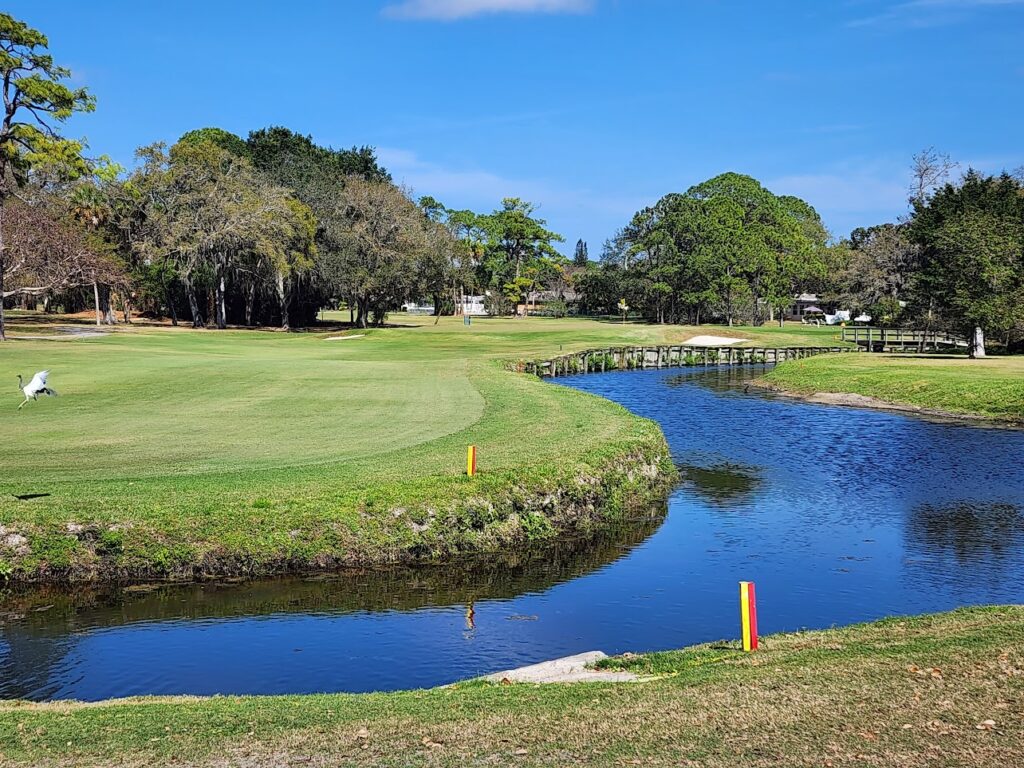
CM – I think my favorite golf hole is number five, it’s not a driver hole being a sub 400-yard dog leg left par 4 with Bowlee’s creek separating two fairways, it comes in play on both the tee shot and approach shot. The further left you go off the tee brings more trouble into play but leaves a shorter second shot with a tougher angle, while further out to the right leaves a mid-long iron in with a good angle at the green. It’s a difficult green to hit and when missed is a very difficult up and down from any spot.
LN – So much history has happened here with Donald Ross, Bobby Jones, Walter Hagen, Tommy Armour and others over the past century, is there an event planned for the centennial in 2026?
CM – Sara Bay has some historic significance in the game of golf, it’s a special place. There is no event currently planned for the centennial, but I imagine there will be something to celebrate with Sara Bay turning 100!



